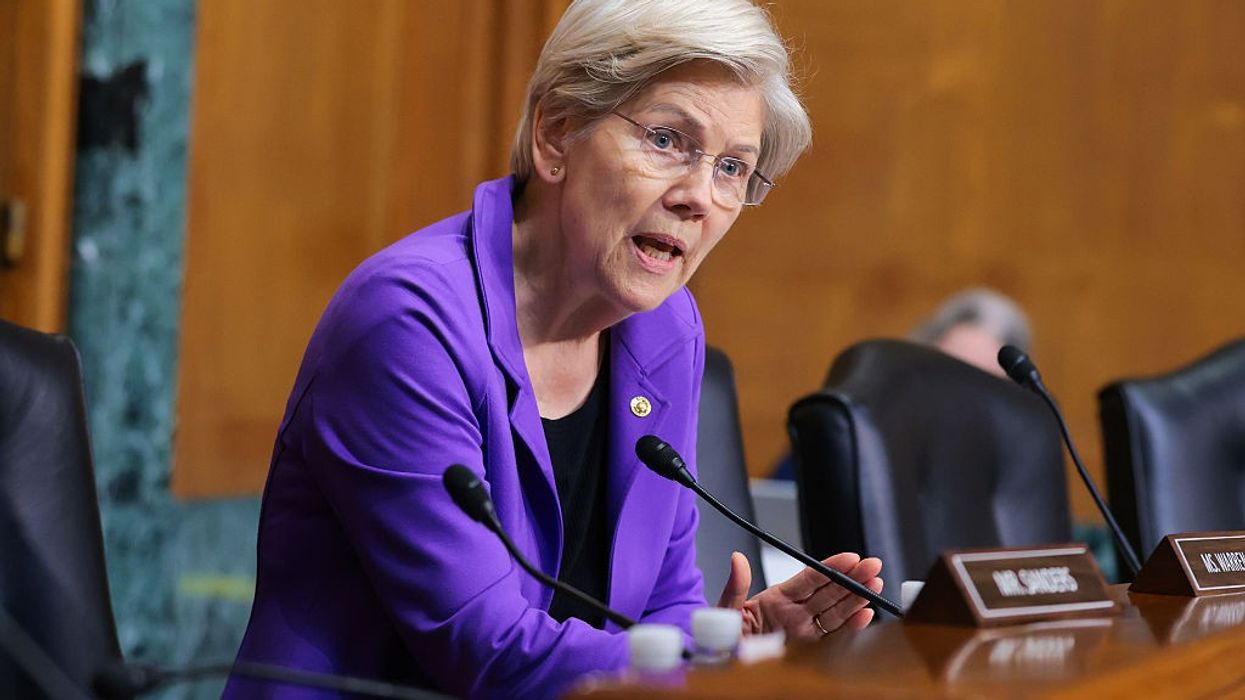'Just Cause' Is a Worthy Cause
Activists in Ithaca, New York are mobilizing for the first city-wide ban on arbitrary firings in the US. Other cities should take note.
Activists in Ithaca, New York are trying something unique: They’re mobilizing support for an ordinance that would prohibit employers in that small city from firing their employees without just cause. If they succeed, they’ll have enacted the first such city-wide ban on arbitrary firings in the country.
Success in this effort will be a big deal, because in the United States, employment—unless otherwise restricted by law, collective bargaining agreement, or individual employment contract—is considered to be “at will.” This means that in the vast majority of cases, employers are entitled to fire workers at their whim, without warning or explanation.
A 2021 report from the National Employment Law Project (NELP) tells us that about half of US workers have been affected by unfair or arbitrary firings at some point in their lives, with devastating consequences for them and their families. Not surprisingly, then, a nationwide survey cited in the report found wide public support for just cause protections, including from 71% of voters in battleground states, with both Democratic and Republican majorities weighing in favorably.
Existing Restrictions on Employers' Right to Fire
Even without new federal, state, or local legislation, employers today face some limits to the at-will doctrine: federal and state laws, like Title VII of the Civil Rights Act, that bar various sorts of discrimination in the workplace; anti-retaliation statutes, like those included in the Fair Labor Standards Act, the Occupational Safety and Health Act, and many other whistleblower-protection statutes; and section 7 of the National Labor Relations Act, that prohibits firing for union or other "concerted" activity. All these laws fall short of robustly protecting workers from retaliatory or discriminatory firings, however, largely because the burden is on the employee to prove the employer's illegal motivation—no simple feat—when under the general at-will rule the employer can fire the worker for no reason at all.
In addition to these limited statutory constraints on the at-will doctrine, over the past 50 or so years a number of state common law exceptions to the rule have developed. The most prevalent is the "public policy" exception, under which, in theory at least, employers can't fire workers for reasons that are contrary to public policy. Courts generally interpret the exception narrowly, applying it only to employees who exercise a clear legal right, perform a clear legal duty, or refuse to violate the law, or when the employer engaged in an “outrageous violation of a well-established public policy.”
Well-crafted state and local laws and ordinances, with accessible and effective enforcement mechanisms, have the potential to empower workers in new and game-changing ways, especially as federal protections erode before our eyes.
A second exception is the "implied contract of continuing employment" (at least theoretically available in 41 states and the District of Columbia). It's derived from employee handbooks, policies, and the like, that suggest protection from discharge except if the employee performs poorly, violates company policies, or has to be laid off because of the employer's economic necessity. Employers can generally get around this claim by expressly stating in their materials that the employee is working on an at-will basis, and that its various policies can be revised at any time, at the discretion of the employer.
Lastly, 11 states have read into the common law an "implied covenant of good faith and fair dealing," imposed on employers and employees, to act fairly. While theoretically this should prohibit firings without cause altogether, in actuality courts rarely find it applies, and then only in the most abusive cases. In other words, none of these common law carve outs from at-will employment have been particularly helpful to workers.
The Ithaca Ordinance
Which brings us to Ithaca’s legislative proposal. As the core provision of its current draft version (embedded at the Ithaca Just Cause website), the ordinance would prohibit discharge of an employee who has completed their (maximum 90-day) probationary period, for any reason other than just cause or a bona fide economic reason. In considering whether the just cause standard has been satisfied, the fact finder is to consider, among other things, whether the employer trained the worker on its performance requirements and bases for discipline, and whether the employer’s policy, rule, practice, or performance standard, including its use of progressive discipline, was reasonable and applied consistently.
Also, except in cases of egregious misconduct, the employer has to specifically notify the worker of what rules they violated or requirements they fell short of, and must utilize progressive discipline prior to firing. Similar notice of reasons is required before discharging a worker on account of bona fide economic necessity. Significantly, if an employee termination is to be upheld, the burden is on the employer to satisfy these requirements by a preponderance of the evidence.
The proposed legislation also adds a "Worker Rights" section to the City of Ithaca Municipal Code, and establishes a commission that would adjudicate complaints of violation. Complaints of violation can also be filed in court.
Retaliation against workers who exercise any of the rights granted by the legislation is expressly prohibited, and use of electronic surveillance as a tool for determining employee performance is restricted. Remedies for employees vary depending on the violation, and include back pay and damages, rescission of discipline and reinstatement, penalties, severance pay, injunctive relief, and attorneys’ fees.
Other Just Cause Efforts
The proposed ordinance echoes the recommendations laid out in these NELP and Roosevelt Institute reports. Published in 2021, both make the case for why this kind of municipal ordinance, or more potently, a comparable state law (or, as an even more radical aspiration, federal legislation, as promoted by Independent Vermont Sen. Bernie Sanders) is justified and overdue for all workers—with NELP focusing particularly on the disproportionate impact of at-will employment on people of color and immigrant workers, who face higher rates of wage theft, discrimination, and retaliation for asserting their rights than the employee population at large.
It should come as no surprise, but it's still shameful, that this country lags far behind many other nations—Australia, Brazil, Japan, Mexico, the United Kingdom, and most of the European Union, to name a few—in providing just-cause protections against arbitrary and unfair firings. Which is why what the Ithaca coalition is doing is really worth noticing. But it's not the first city to take this on: Philadelphia led the (notably small) pack when, in 2019, its city council enacted a just cause termination ordinance for the city's approximately 1,000 parking lot attendants. New York City was next, enacting a comparable ordinance protecting its fast food workers in 2021. Also in New York City, a diverse coalition of unions, advocacy organizations, and high road employers are pressing for passage of a Secure Jobs Act covering all employees who work in the city. With its newly elected democratic socialist mayor Zohran Mamdani, it just might succeed.
The US territories of Puerto Rico and the Virgin Islands have just cause laws. In Illinois, a Secure Jobs Act, pressed by Raise the Floor Alliance and a broad array of allies, was introduced in the state legislature in 2021, but has yet to be enacted. In what might come as a surprise, Montana is the only state in the US to have enacted just cause legislation, and it's been on the books for decades. While not nearly as progressive as the Ithaca, New York City, and Illinois models, it is unique in prohibiting, state-wide, firings without good cause.
Will Just Cause Laws Hamper Unionization Efforts?
Some may be concerned that just cause legislation could undercut unions' ability to successfully organize, since that's a key benefit they can provide in collective bargaining agreements. But there are a number of arguments that cut the other way—including that if firing without good cause is made illegal and is readily enforceable, it creates a more effective impediment to employers' efforts to get rid of pro-union activists than the weak and slow remedies the National Labor Relations Act has to offer. And, just cause for all workers would provide a floor, not a ceiling, for union negotiations for even better protections against improper firings at unionized workplaces.
Parting Thoughts
Worker rights advocates should watch Ithaca Just Cause's initiative with keen interest. It also should give food for thought—and inspiration—for those of us who live in other cities and states. It’s clear that just cause protections are popular with workers across party lines. Well-crafted state and local laws and ordinances, with accessible and effective enforcement mechanisms, have the potential to empower workers in new and game-changing ways, especially as federal protections erode before our eyes. For those of us in locales where this might be possible, maybe it's time to give it a try.


